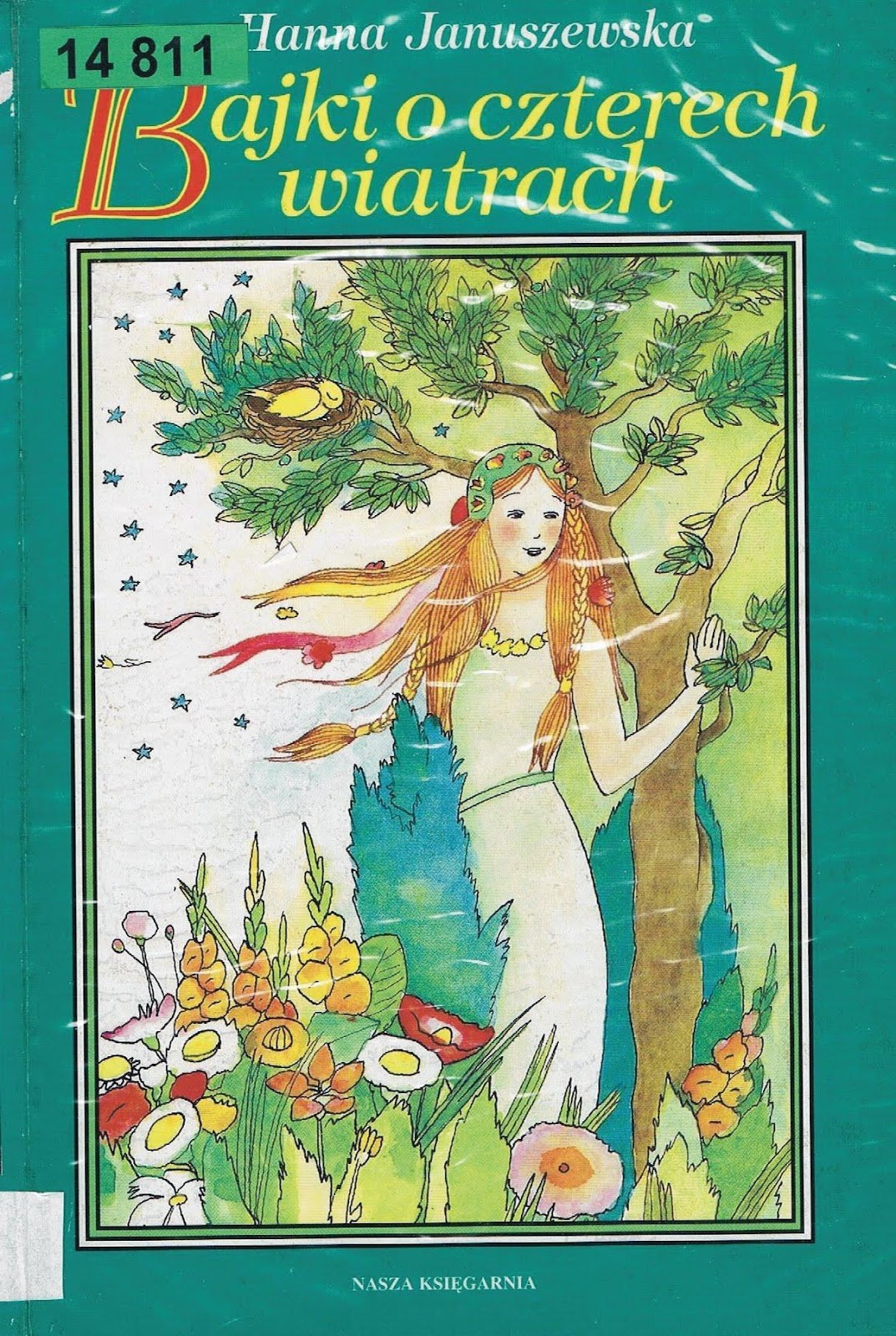Title of the work
Country of the First Edition
Country/countries of popularity
Original Language
First Edition Date
First Edition Details
Hanna Januszewska, Bajki o czterech wiatrach, ill. Krystyna Michałowska. Warszawa: Nasza Księgarnia, 1978, 78 pp.
Genre
Anthology of myths*
Fairy tales
Target Audience
Children
Cover

Cover of the 1994 edition. Courtesy of the publisher.
Author of the Entry:
Tomasz Królak, Univeristy of Warsaw, ufnal8@gmail.com
Peer-reviewer of the Entry:
Katarzyna Marciniak, University of Warsaw, kamar@al.uw.edu.pl
Elżbieta Olechowska, University of Warsaw, elzbieta.olechowska@gmail.com

Photograph courtesy of Krzysztof Moszyński, the Author’s Son.
Hanna Januszewska-Moszyńska
, 1905 - 1980
(Author)
A prose writer, poet, translator from German. A University of Warsaw graduate with MA in Polish philology. Worked for the Polish Radio, numerous Polish weeklies (“Tygodnik Ilustrowany”, “Bluszcz”) and children’s magazines (“Płomyczek”, “Płomyk”, “Miś”, “Świerszczyk”). Author of dozens of novels, stories, plays and poems for children, some of which have been translated into European languages, e.g. Lwy [English: The Lions, French: Les Lions] and O krakowskim kocie [German: Der Kater von Krakau, Dutch: Hen katje van Krakau]. Received several Polish and international awards, including Polish Prime Minister’s Prize and Order of the Smile (an international award given by children for pro-children activities). Her book Bajki o czterech wiatrach [Tales of the Four Winds], 1978, was included in the 1979 Special Hans Christian Andersen Honour List, issued on the occasion of the International Year of the Child.
Sources:
Hanna Januszewska at książki.wp (accessed: September 16, 2022),
Wikipedia (accessed: September 16, 2022).
Bio prepared by Tomasz Królak, Univeristy of Warsaw, ufnal8@gmail.com
Summary
Based on: Katarzyna Marciniak, Elżbieta Olechowska, Joanna Kłos, Michał Kucharski (eds.), Polish Literature for Children & Young Adults Inspired by Classical Antiquity: A Catalogue (accessed: June 11, 2021), Faculty of “Artes Liberales”, Warsaw: University of Warsaw, 2013, 444 pp.
The book consists of four stories, each connected with pranks and mischief committed by one of the four winds (based on the Anemoi of classical mythology) – Boreasz [Boreas], Fawoni [Favonius], Notus and Euros [Eurus]. In the first tale, Boreasz, the Northern Wind steals an impoverished aristocrat’s last pair of earrings. Her servant Justyna, wrongly accused of theft, goes far north, to the hut of Kuma Zima [Godmother Winter]. She stays there as a servant, befriending both Zima and Boreasz. With the coming of spring, she finds the earrings and brings them back to her mistress. In the second tale, Fawoni, the Western Wind brings a dryad from Greece to the garden of an old Polish noble to tend his imported olive tree. The dryad’s presence ultimately results in the noble acknowledging a long-hidden affection for his good-hearted housekeeper. The third story, Notus, tells the tale of a shepherd boy and a lonely miller, who, as a result of the Southern Wind’s prank, end up visiting the stars. The fourth tale, Euros, begins “more than three hundred years ago” and presents the story of the Eastern Wind chasing after an ifrit at the behest of a Baghdadi sorcerer. Euros finally catches the ifrit who is fomenting trouble among Polish 17th century soldiers.
Analysis
The title characters are named after the classical gods of the winds (their names are a mix of the Greek Anemoi and their Roman counterparts, Venti) and resemble them. They share both their appearance (winged humans) and behaviour (full of trickery and mischief, not bound by human morality), while seeming gentler than their Greek/Roman models. Other mythological creatures – dryads, satyrs and Pegasus – appear in the tales, as well an olive tree, which in Polish culture is strongly associated with the Mediterranean, and especially with Greece. The peaceful and magical garden in Fawoni may be considered a variation on the theme of Arcadia.
Further Reading
Frycie, Stanisław, ed., Lektury odległe i bliskie. Antologia literatury dla dzieci i młodzieży, Warszawa: Wydawnictwa Szkolne i Pedagogiczne, 1991, 194–196.


